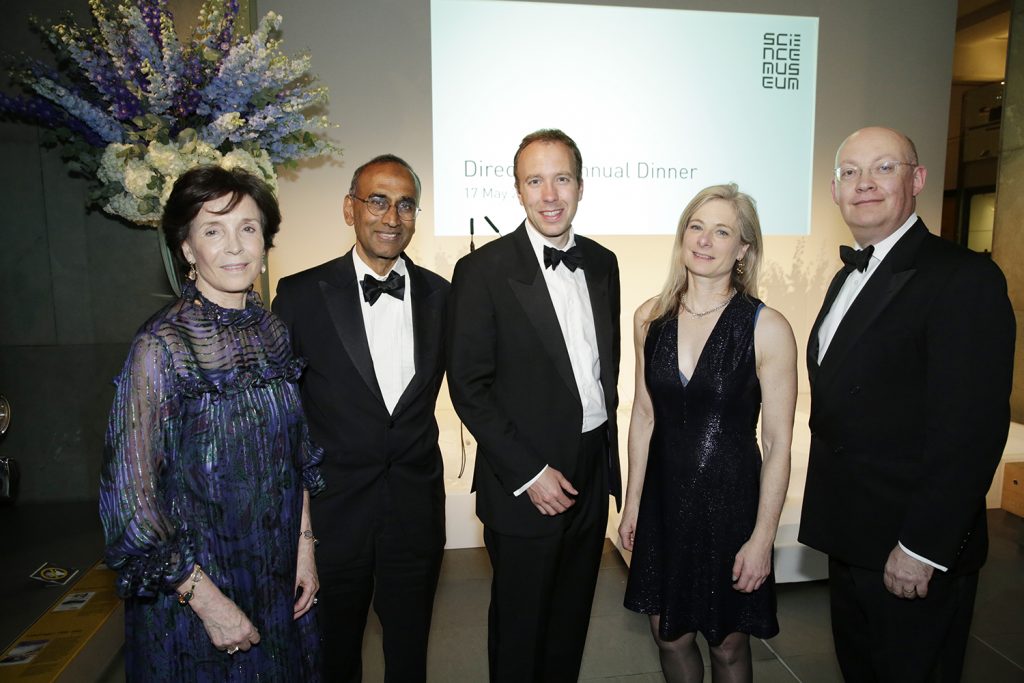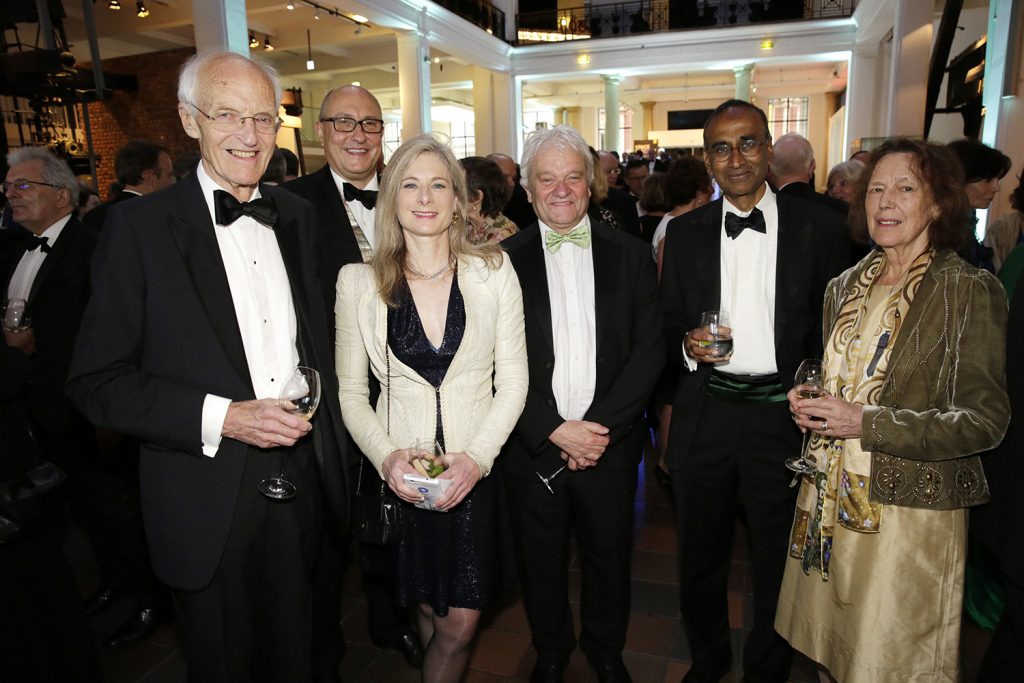The cosmic mystery of dark matter was the talking point of the most stellar event in the Museum’s calendar last night, the Director’s Annual Dinner.
https://youtu.be/o-AwP7Az00Y
Prof Lisa Randall of Harvard University was the guest of honour at the Museum’s 2017 Director’s Annual Dinner, following in the footsteps of remarkable individuals such as Craig Venter and Cédric Villani.
Co-author of one of the most influential papers in in modern physics, which heralded hitherto unobserved new spatial dimensions, the particle physicist discussed her latest book Dark Matter and the Dinosaurs: The Astounding Interconnectedness of the Universe which links dark matter, an elusive and mysterious source of gravity, to events on Earth, notably the impact that wiped out the dinosaurs that ‘made room for us to evolve.’
Prof Randall discussed her most recent research on how to identify the nature of dark matter and informed the black tie audience that there were ‘probably a billion dark matter particles passing through you every second.’
Encouraging us all to ‘explore a little more deeply’, Prof Randall praised the Museum as ‘really impressive’ and ‘beautiful and informative,’ adding that ‘in these crazy times, engaging in and appreciating science is so critical.’
Science is global, long-term, evidence-based and involves checks and balances, she said.
Introduced at the dinner by Sally MacDonald, Director of the Museum of Science and Industry, Prof Randall was also one of the distinguished figures who contributed to Einstein’s Legacy, a museum exhibit marking the centenary of his theory of gravity (the general theory of relativity).
Earlier, Director Ian Blatchford described the year’s highlights for the Science Museum which ranged from being the mustering point for 10,000 people for the March for Science to the relaunch of Tomorrow’s World brand, ‘as part of the biggest public engagement campaign of any major country, with the BBC, the Royal Society, Wellcome, the Open University and the Science Museum Group.’
The joint endeavour will be reflected next month when Antenna (the contemporary science zone in the Museum’s Wellcome wing) will be rebranded Tomorrow’s World in time for a major BBC Broadcast on 15 June, Britain’s Greatest Invention.

The Medicine Galleries, which will open in 2019, have been supported by Wellcome, Heritage Lottery Fund and the Wolfson Foundation, and Blatchford added that two new principal funders have now joined: GSK and The Dr Mortimer and Theresa Sackler Foundation.
Also opening in 2019 is an extraordinary collaboration with The Royal Society which will celebrate the birth of the society, the oldest academy of science, and the rise of London as a scientific powerhouse. ‘The Royal Society and this museum hold probably the finest 17th and 18th century science collections in the world,’ he said.
Those projects follow two landmark galleries that opened in 2016: Wonderlab: The Statoil Gallery – the new interactive gallery for young audiences and families, and Mathematics: The Winton Gallery. ‘One leading art critic wrote that he left the gallery longing – for the first time in his life – to know more equations. Result,’ said Blatchford.
Another landmark moment was the acquisition by the group of the Soyuz capsule used by Tim Peake on his Principia mission to the International Space Agency, which will move from London to the relaunched National Science and Media Museum in Bradford later this year.
Blatchford listed the adventurous exhibitions programme: Robots, ‘the largest collection of humanoid robots ever assembled’; Our Lives in Data, on the power of big data; Wounded, the health history of the First World War; Voyages, an exquisite photography exhibition by Anderson and Low; Engineer Your Future explaining engineering careers to young people; and most recently Valentina Tereshkova: The First Woman in Space, celebrating the 80th birthday of Valentina Tereshkova.
And he described the increasing international reach of the Science Museum Group, from a partnership agreement with the Museum of Tomorrow in Rio de Janeiro to a forthcoming partnership with the Science and Technology Museum in Shanghai.
The Science Museum’s primary focus for the year ahead is the UK-India Year of Culture. During a British Government mission to Delhi in November 2016, the respective Prime Ministers Theresa May and Narendra Modi announced that the Museum would be holding one of the landmark events of 2017: the Illuminating India Festival that opens in the Museum this autumn.

The Museum receives more educational visitors that any other museum in Britain, and has just recorded its highest ever attendance from such groups – 460,000. The Group Chairman, Dame Mary Archer told the dinner that the UK needs this investment in young minds more than ever before. ‘As we embark on life outside the EU as an international trading nation, it will be vital to upskill the UK’s workforce in STEM subjects.‘
In October, we marked the culmination of a highly successful year for Manchester as European City of Science at the Museum of Science and Industry, with the most successful festival of its kind, the Manchester Science Festival, run by the Museum along with the largest STEM Ambassador programme with a network of over 2000 STEM ambassadors.
Finally, Dame Mary presented a Fellowship of the Museum, the highest accolade that it can offer, to one of the UK’s most distinguished scientists, Sir Venki Ramakrishnan, President of the Royal Society, who won the Nobel prize for his work elucidating the workings of one of the wonders of nature, a molecular machine called the ribosome.

Sir Venki remembered visiting the museum in the early 90s with his son, ‘and it was fantastic,’ not least because it had an exhibition about the MRC Laboratory of Molecular Biology in Cambridge, where he was about to work, which impressed his teenager. He said the Royal Society enjoyed a ‘very fruitful partnership’ with the Museum.